
Developing the right content strategy for your personal or professional brand doesn’t have to be daunting. Sure, it can be challenging, but it can also be simplified.
Solopreneurs and startup founders hesitate to dig into content creation for a few reasons:
1. There aren’t enough hours in the day.
2. They aren’t sure where to start or how to measure the success of what they create.
3. It’s not a priority, with all the work that’s pending.
4. They’ve already started but are stagnating, or don’t have a clear path.
Here’s an interesting infographic that digs into the numbers behind these reasons:
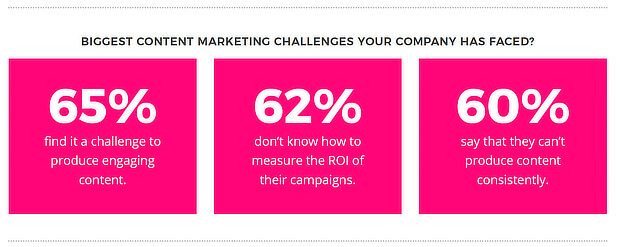
Source: OptinMonster.com
These reasons are valid. Everyone’s experience is different.
Validity doesn’t mean obstacles are insurmountable.
We’ll get into that more a little later.
First, let’s define content strategy.
What is Content Strategy?
Content strategy connects your brand’s work with your organizational goals, readers’ needs, and target customers. Content isn’t a charity. All content should be supporting a business goal or be the cure to a reader’s pain. Otherwise, it’s empty fluff, which doesn’t serve a purpose.
A solid content strategy plan serves a few purposes for solopreneurs or in startups:
1. It serves as a guide for the voice, tone, and delivery of content.
2. The plan outlines the promotion and distribution tactics you will use once the content is live, and
3. It outlines the benefit your audience will receive from consuming the content (i.e., the problem it solves, actionable takeaways, or a reference point to be saved and returned to in the future).
There’s a fallacy that content strategies must be complicated and multi-layered to be thorough.
This fallacy leads to intimidation or hesitation for people with limited time to dig in and get started. Complex content strategies cause problems.
The Pitfalls of a Complex Content Strategy
Solopreneurs and startup founders are driven people, by nature. Nine times out of ten, that personality trait is a good thing. The exception is when it comes to content planning.
Perfectionism is your enemy when planning content. It’s easy to get too granular and assume each piece of content must be pixel perfect and deliver instantly impactful results.
Content doesn’t have to be perfect. Perfection shouldn’t be your goal.
When you strive for perfection, you’re sure to get frustrated. Life happens. And, when it does, the consistency of production gets derailed. When this consistency gets derailed, frustration is the result.
When there’s enough frustration, there’s burnout. When people get burned out, we quit, or worse yet, mail it in and do a half-hearted job.
What’s the cure for frustration? Simplicity.
Why Simple Strategies Lead to Great Results
A simple content strategy has the KISS principle as a foundation.
KISS = Keep It Simple Silly
Simplicity limits the unpredictable. It enhances your control over the situation. It makes content creation something you’ll enjoy and value, rather than see as a chore that has to get crossed off a list.
Compounding results are the core of why content is potent for personal and professional brand development, and a simple strategy allows you to get there faster by comparison.
Simple Content Strategies for Solopreneurs
There are two types of content strategies for solopreneurs to consider: blog content strategy and social media strategy.
Let’s consider a blog content strategy first.
Blog Content Strategy for Solopreneurs
Building a blog from the ground up requires patience, consistency, creativity, and motivation. There will be days when you do not want to write 200 words of the 1,000-word post staring at you on the calendar.
If you don’t want to, that freelancer you’ve contracted probably doesn’t either. That’s part of the gig. The days you fight through and forge ahead matter the most.
When you can establish a plan that works for you, it makes the tough days more manageable.
Here are a few basic things to consider for your strategy:
1. Set aside at least 30 minutes a day for content. Every day. This 30 minutes could be for writing a blog article or guest post, yourself, or delegating that responsibility to a freelancer you’ve contracted.
2. Evaluate the competitive landscape and plan accordingly. Sometimes the competition is light, and you can build a strategy focused around long-form, pillar articles. Other times, the competition is heavy, and it’s the right move to chase low-volume but low-competition keywords to rank quickly.
3. Develop a deep understanding of your target reader. Before you write one word of content, you must know your target reader intimately. Who are they? What makes them tick? How do they behave? Does their behavior reflect what you would expect? Answering these questions helps you to frame your content in a way that will be attractive to them as readers.
4. Who’s doing the content creation? You’ll likely be the one. However, if you can, contracting a freelancer or two on occasion can lighten the load. This consideration will be an ongoing one as you’re working to build out a blog as a solopreneur.
5. Build a content calendar based on all the above factors. The content calendar should be in a visible place in your workspace, so it’s always there. This placement helps as a reminder to spend that daily 30 minutes. It could be an old-school paper calendar on your desk or the wall, project management software, or content scheduling software (there’s a ton of em).
6. Stick with one type of content in the beginning. While it’s great to have different content on your blog in time, start with written content. In time you can pivot to doing some video, maybe a podcast or two, and some webinars. Again, KISS. Please keep it simple.
The timing of how you approach content creation for your blog is also essential. If you’re starting from scratch, there’s a 120-day plan which works very well, especially for those with limited time to write.
A 120 Day Blog Content Strategy for Solopreneurs
Over four months, it’s possible to make a profound impact on the domain authority of your website, and also the traffic it generates. There are a few steps to take in 30-day increments to make this happen.
The First 30 Days
The first 30 days should focus on creating content for your blog. Develop these articles around keywords with a low-to-moderate competition level and a reasonable keyword volume. If you’re using a research tool Ahrefs, the keyword difficulty you should be targeting is anything 35 or less, and the monthly global search volume should be 1,000 or greater.
These articles should be in-depth, but don’t have to be long-form cornerstone content with several thousand words. A goal of 1,200 to 1,500 words per article is reasonable and reachable.
Numbers source: Oberlo
When day 30 hits the calendar, you stop publishing content on your blog and turn to the next part of the strategy: guest post acquisition and publishing.
Days 31-90: A 100% Focus on Guest Blogging
Guest blogging is one of the fastest ways to organically build your blog’s domain authority and become more competitive in your niche. Once you’ve completed the first month of content creation on your blog, days 31-90 of your 120 days should be spent on guest blog acquisition and submission.
It’s a good idea to approach blogs in the 30-65 DA range if you’re just getting started with the process and nailing down your pitch. As you begin to win some do-follow backlinks from these blogs, you have more social proof, making it easier to win more significant opportunities in time.
Don’t ever pay for links or blogging opportunities. You’ll get offered to do so by the occasional site owner, but that’s verging into “black hat” SEO territory that you want to avoid. To keep things above board, only write for sites that offer a permanent do-follow backlink in return for your work.
Everyone’s goals are a little different during these 60 days, but if you can land at least 8-10 links coming back to your website from guest opportunities, it’s an early success. After a few months of guest blogging, it’s time to turn attention back to your blog.
Days 91-120: The Hybrid Approach
After three months of content creation, two things are happening concurrently:
1. Those blog posts you wrote in Days 1-30 start to gain a little traction, driving organic visits to your website.
2. The links you earned from guest blogging point back to your blog, building your domain authority.
These two things working in tandem are helping build your competitiveness in the niche and increasing your ability to earn more traffic over time.
For the last 30 days of your 120-day plan, the focus is on a hybrid approach of writing on your blog and landing and writing more guest posts. The posts you write on your blog should focus on keywords that have surfaced from your original post. Some of these will be intentional, while others will be related keywords that you couldn’t have predicted.
This process will help you to grab more easy wins, even further building your momentum.
By the 120 day mark, you should have reached a couple of checkpoints – give or take:
1. Your domain authority should improve to 15-20.
2. You should be driving at least 1,000 unique visitors a month.
If these two things are happening, you’re on the right track. From Day 120 forward, you can rinse and repeat this strategy however you’d like to continue to build momentum.
Who knows, at some point, you may need to bring on a freelancer to help!
Your blog strategy and social media strategy need an alignment for maximum impact. Most of what you’ve heard about how to approach social media from scratch is probably wrong.
Social Media Content Strategy for Solopreneurs
When you start sharing your content on social media pages that don’t have a following, you’re yelling down an empty hallway—yelling into the void.
You’ll see plenty of articles out there that suggest you share every item on every social medium every day to build an audience. If you don’t know who your audience is, you’re swimming directly upstream. It’s wasted effort, y’all.
Instead, secure the social accounts you could see using at some point (probably Facebook, Instagram, LinkedIn, maybe Twitter), brand them, then leave them the heck alone. After you’ve been diligently working on your blog and building an audience for a minimum of 90-120 days, you can return to these accounts.
After 90-120 days of consistent content creation, you should have an intimate understanding of your audience. Then, and only then, you can start to craft your social media audience(s).
Buy a few likes on Facebook from people who match your target reader. Do this slowly and deliberately. When you do, you’ll have a small (but ready) audience prepared to engage with the content you’ve created. Now start to share a little and see where it takes you, and tweak accordingly.
Pick one medium and dig in. Don’t spread yourself too thin. Following any other process is putting the cart before the horse.
Blog content strategy and social media strategy is somewhat different for startup founders, but the core principles are similar.
Straightforward Content & Social Media Strategy for Startup Founders
How you approach content strategy as a startup founder depends where your startup is in its journey. How you spend time is tied directly to your daily responsibilities, and time to be the executor versus the delegator.
Startup content strategy should align with one of three phases:
1. Fledgling
2. Emerging
3. Mature
Let’s take a quick look at how strategy changes for each phase.
Fledgling Startups
A fledgling startup is bootstrapping, or maybe has raised an initial seed round of funding, but doesn’t have a full-time employee focused on content creation. There’s a time crunch here for the founder, and they likely only have 30 minutes to an hour a day to focus on content.
A goal of one blog post a week is reasonable for a fledgling startup. Two hundred words a day should be the goal for a 1,000-word piece. That’s doable.
The 120-day blog content strategy outlined above for solopreneurs holds plenty of weight here as well. If the startup founder can follow a similar process by creating content themselves – or bringing a freelancer into the mix – the effort can have a similar effect on growth.
Suppose the founder lands a guest blog here and there, that effort that’s added to the mix. Guest posts aren’t typically tied to hard deadlines – allowing the work to get done when there’s time – but also have a substantial impact on the authority of your voice and the traffic base you can build.
Emerging Startups
In an emerging startup – one that has some consistent monthly revenue, a handful of full-time employees, and has maybe raised a Series A or B funding round – things are a little different.
The founder has a budget available to acquire content from freelancers, or maybe even contract with a freelancer to create content based on a monthly quota for a set price. In this case, the founder switches from the executor to strategist, feeding the freelancer the articles they would like written on deadlines, and are otherwise hands-off.
Even though delegation is the strategy, the expectations for freelancers must be set in stone and crystal clear for everyone involved. It’s advisable to have freelancers sign a contract that clearly outlines expectations, deadlines, deliverables, and the project’s length. This contract eliminates room for interpretation, which could stand in the way of productivity and a mutually-beneficial relationship.
Suppose the results of this delegation and content creation are strong enough. In that case, the founder may potentially consider bringing on their first full-time content hire and start to flirt with the thought of getting someone on board to manage social media on a part or full-time basis.
But that can come later; it shouldn’t be a priority until blog content has catalyzed a consistent traffic flow to your website.
Mature Startups
Mature startups are humming along as all systems go. The founder is now somewhat removed – if not removed – from the content creation process. An Editor or Content Manager manages the content process with limited strategic input from the founder (unless things start going sideways). A full-time Social Media Manager is executing a social media strategy and may have another team member (an assistant or intern) that assists.
Content is acting as a full-fledged business engine, driving down customer acquisition and lead generation costs, and relieving many of the headaches founders experience with this early on.
As the startup moves from fledgling to mature, a founder should have increasingly less interaction with content. To get there, though, requires them to get their hands dirty and do some creation early.
Startups reach this level of maturity after several years of making content a priority. It doesn’t and will not happen overnight. It takes consistency, constant tweaking, and dedication to making content a core part of your marketing efforts.
Content creation is a commitment for solopreneurs and startup founders. The scope and nature of that commitment changes in time, but the initial steadfastness can drive huge dividends down the road.
If you have 30 minutes a day, you can spark your content program to become this business engine.
And, it’s more straightforward than it seems.

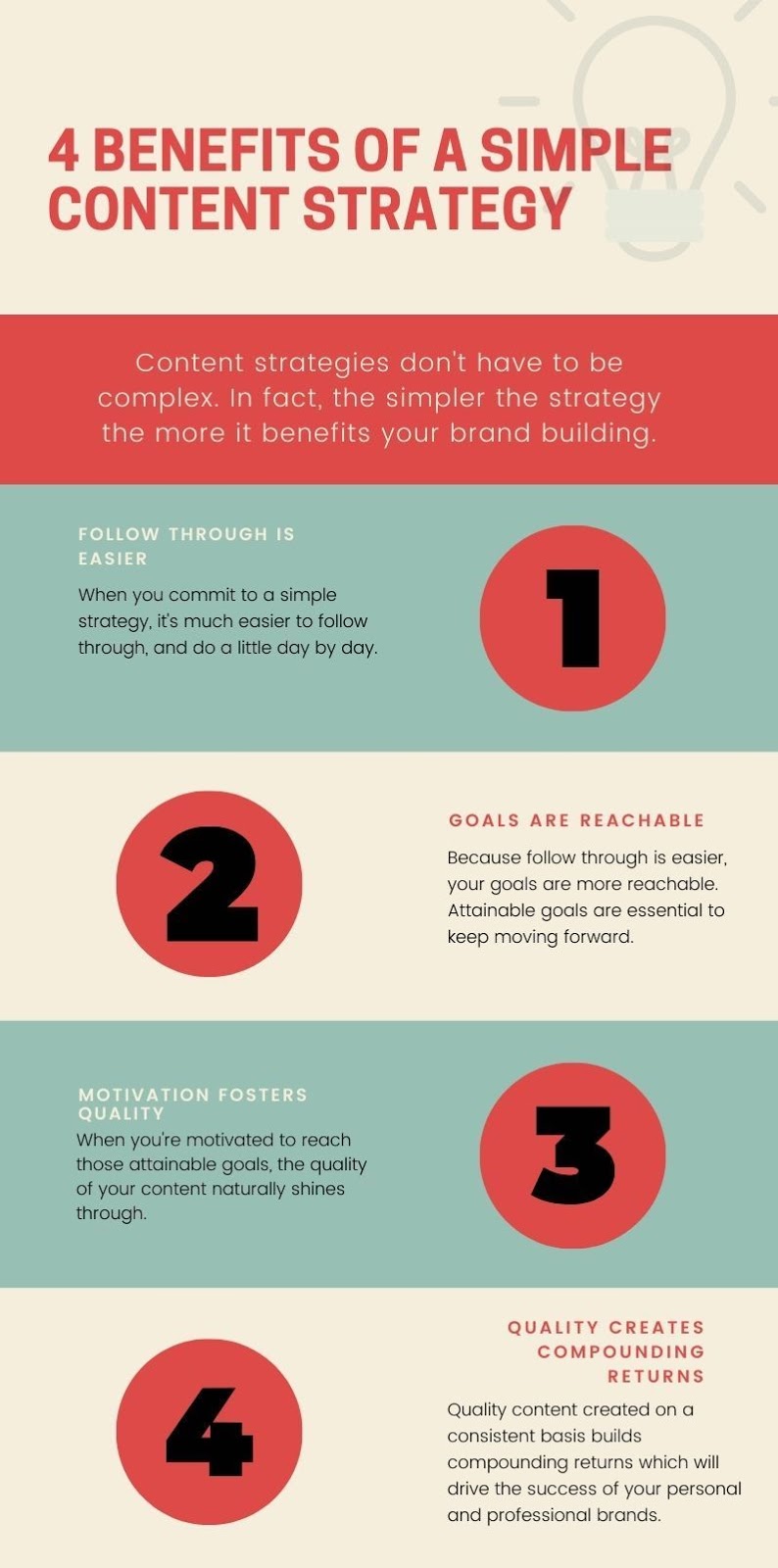
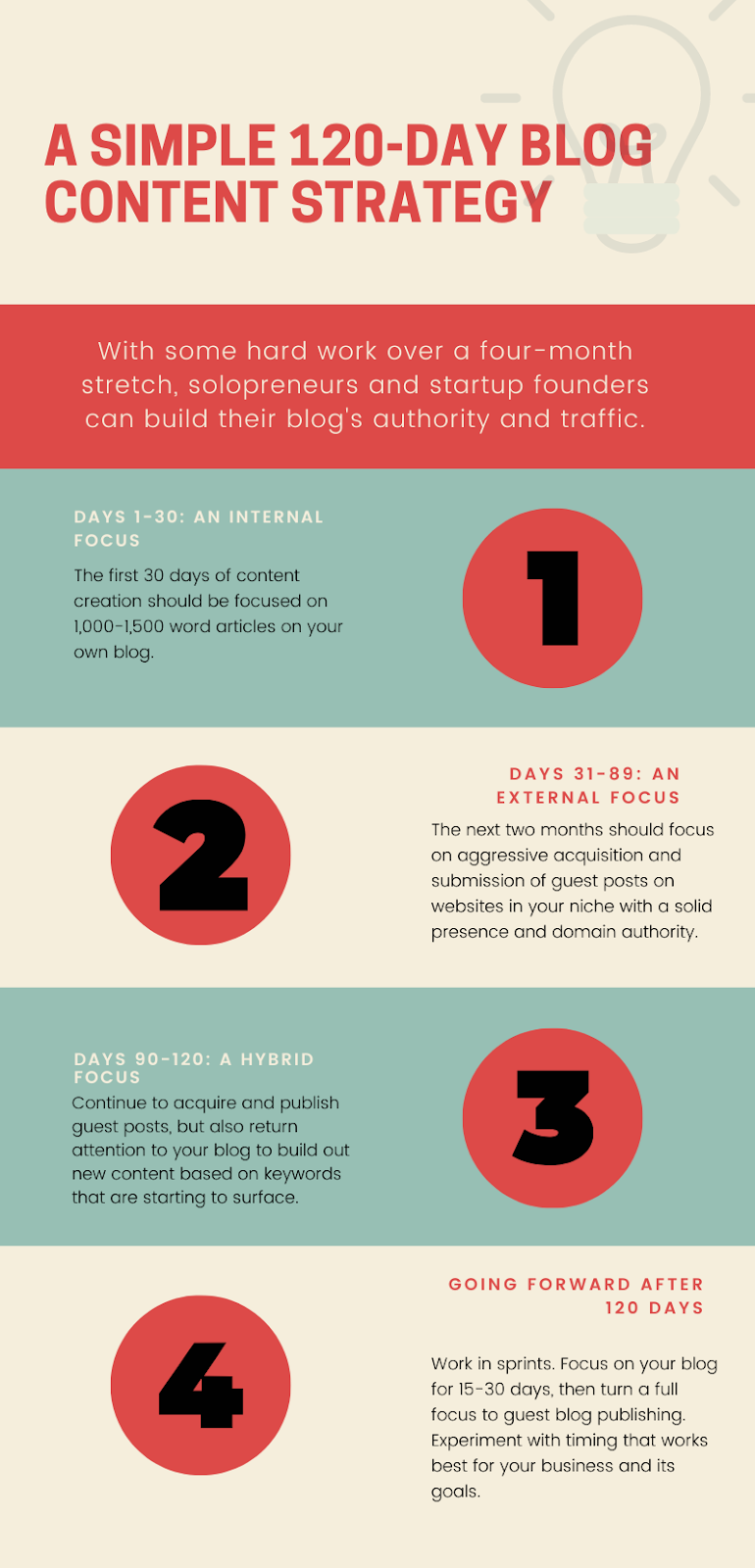
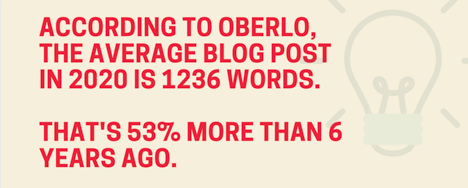
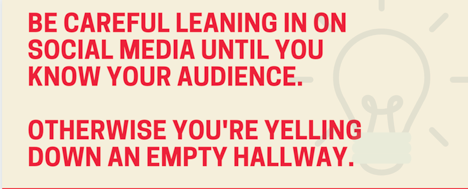

That’s very good information you have provided. I am a college student and this content motivates me. 🙂